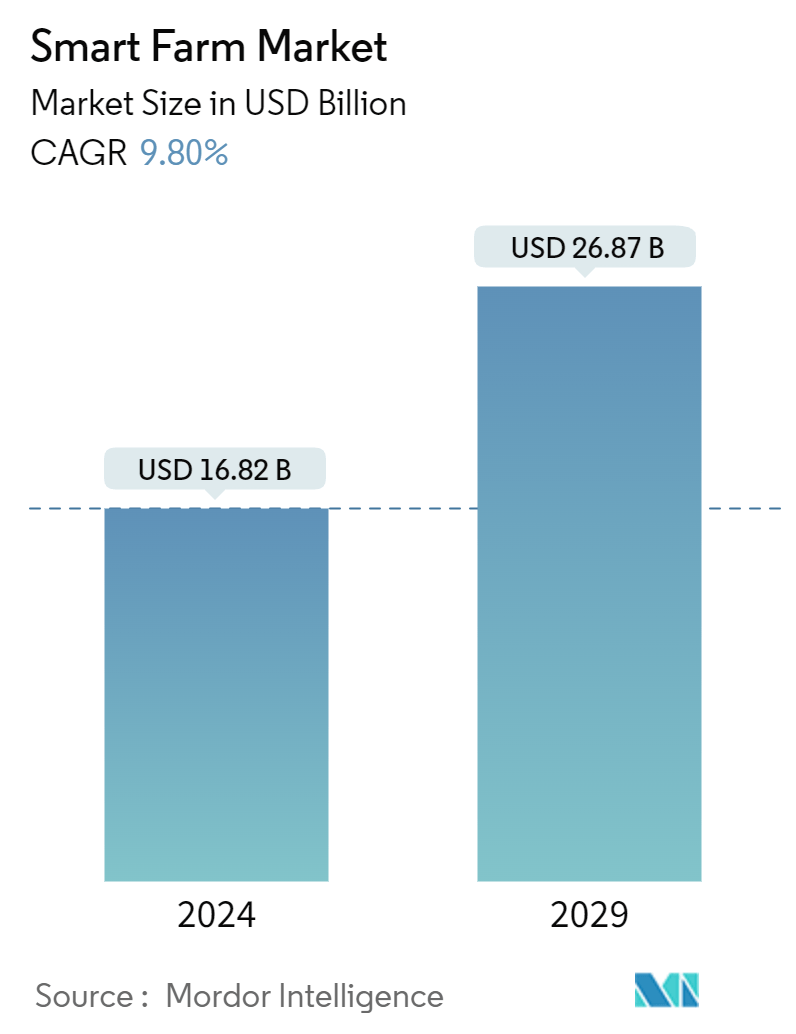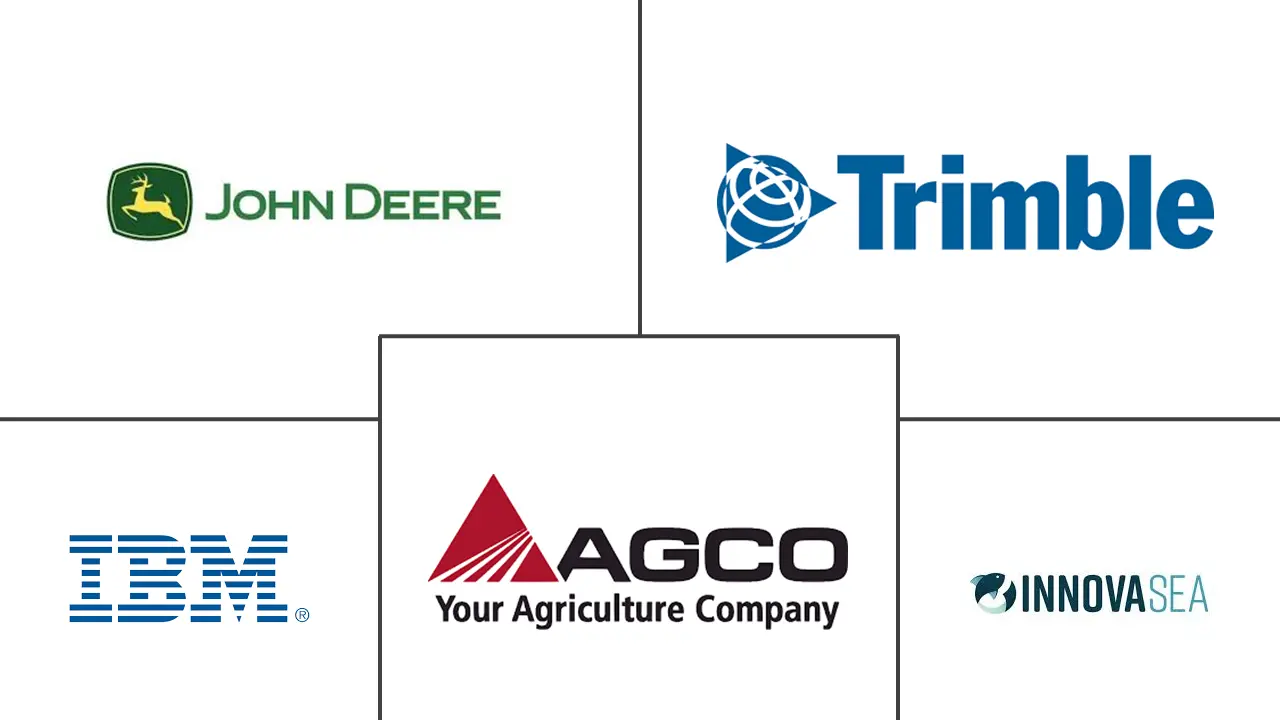Market Size of Smart Farm Industry

| Study Period | 2019 - 2029 |
| Market Size (2024) | USD 16.82 Billion |
| Market Size (2029) | USD 26.87 Billion |
| CAGR (2024 - 2029) | 9.80 % |
| Fastest Growing Market | Asia Pacific |
| Largest Market | North America |
| Market Concentration | Medium |
Major Players
*Disclaimer: Major Players sorted in no particular order |
Smart Farm Market Analysis
The Smart Farm Market size is estimated at USD 16.82 billion in 2024, and is expected to reach USD 26.87 billion by 2029, growing at a CAGR of 9.80% during the forecast period (2024-2029).
- The expansion of the global smart farming market is anticipated to be propelled by the growing adoption of the Internet of Things (IoT) and artificial intelligence, the digital transformation of agricultural practices, and an increased reliance on advanced technologies to improve production globally.
- The expansion of farming is regarded as a fundamental element that can significantly impact a nation's economic progress. It generates income through food and raw materials, serving as a vital source for imports and exports. Furthermore, it creates extensive employment opportunities. This sector aids countries in transitioning their economies from traditional to advanced stages, thereby promoting market development. For instance, in developing economies such as India, around 55% of the population is engaged in agriculture and allied activities but constitutes about 15% of GDP (gross domestic product). In contrast, developed economies such as the United States contribute 1% of GDP (gross domestic product) due to stakeholders involved in conventional agricultural practices.
- Moreover, technologically advanced structures based on innovations from the Internet of Things offer a sustainable alternative to food production. By providing a controlled environment for plant growth, they protect plants from the vagaries of the weather, ensuring consistent and reliable results. Therefore, smart farming is increasingly seen as the future of agriculture globally.
- Advanced agricultural techniques enable farmers to enhance their cultivation practices by acquiring valuable information regarding plant health, growth rates, and potential challenges such as pests and diseases. Additionally, producers can reduce labor expenses since monotonous tasks like measuring, counting, and scouting can be automated, allowing them to allocate time to other essential activities. Moreover, the accuracy of harvest predictions can be significantly improved, as data-driven farming facilitates higher yields and more precise harvest forecasts.
- Furthermore, several regional governments are investing in the agriculture sector and increasing the adoption of advanced technologies, further driving the market’s growth. For instance, in July 2024, the National Bank for Agriculture and Rural Development (NABARD) introduced an agricultural fund aimed at start-ups and rural enterprises, known as Agri-SURE, which has an initial corpus of INR 750 crore (USD 89.32 million). Nabventures, a wholly-owned subsidiary of NABARD, will manage this fund.
- The substantial expense associated with smart farming equipment is a significant obstacle to the market’s growth. Smart farming utilizes advanced technologies and expensive tools, such as sophisticated sensors, drones, variable rate technology (VRT), global positioning systems (GPS), global navigation satellite systems (GNSS), guidance instruments, and receivers. While these technologies and tools are highly efficient, they have a significant financial burden. Furthermore, the installation and operation of smart farming equipment necessitate skilled personnel.
- Moreover, the smart farm sector has experienced challenges in production, distribution, and demand stability due to various macroeconomic factors. Restrictions on trade have led to disruptions in the supply chain, prompting vendors to focus on enhancing smart farm exports. For instance, South Korea initiated the construction of an intelligent farm in the Middle East, utilizing technology designed to cultivate various crops while minimizing water usage. The government is committed to fostering smart farm exports to the region, emphasizing technological advancement and competitive pricing.

